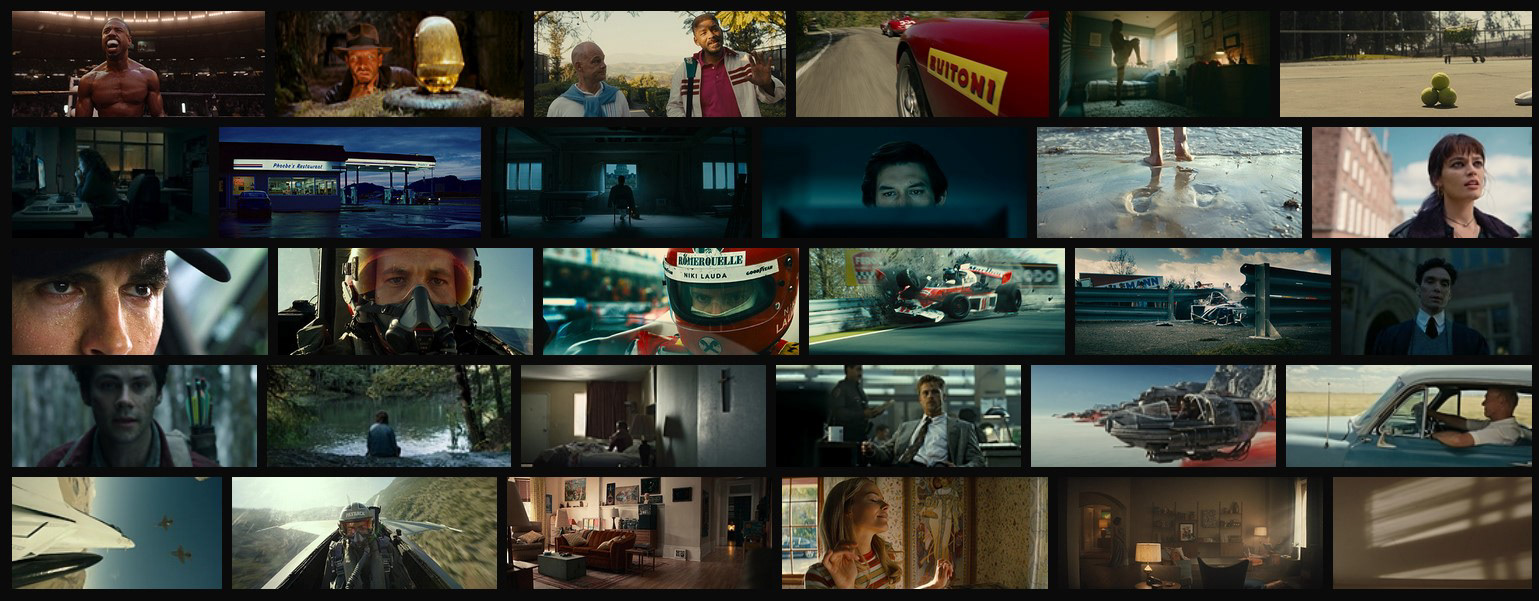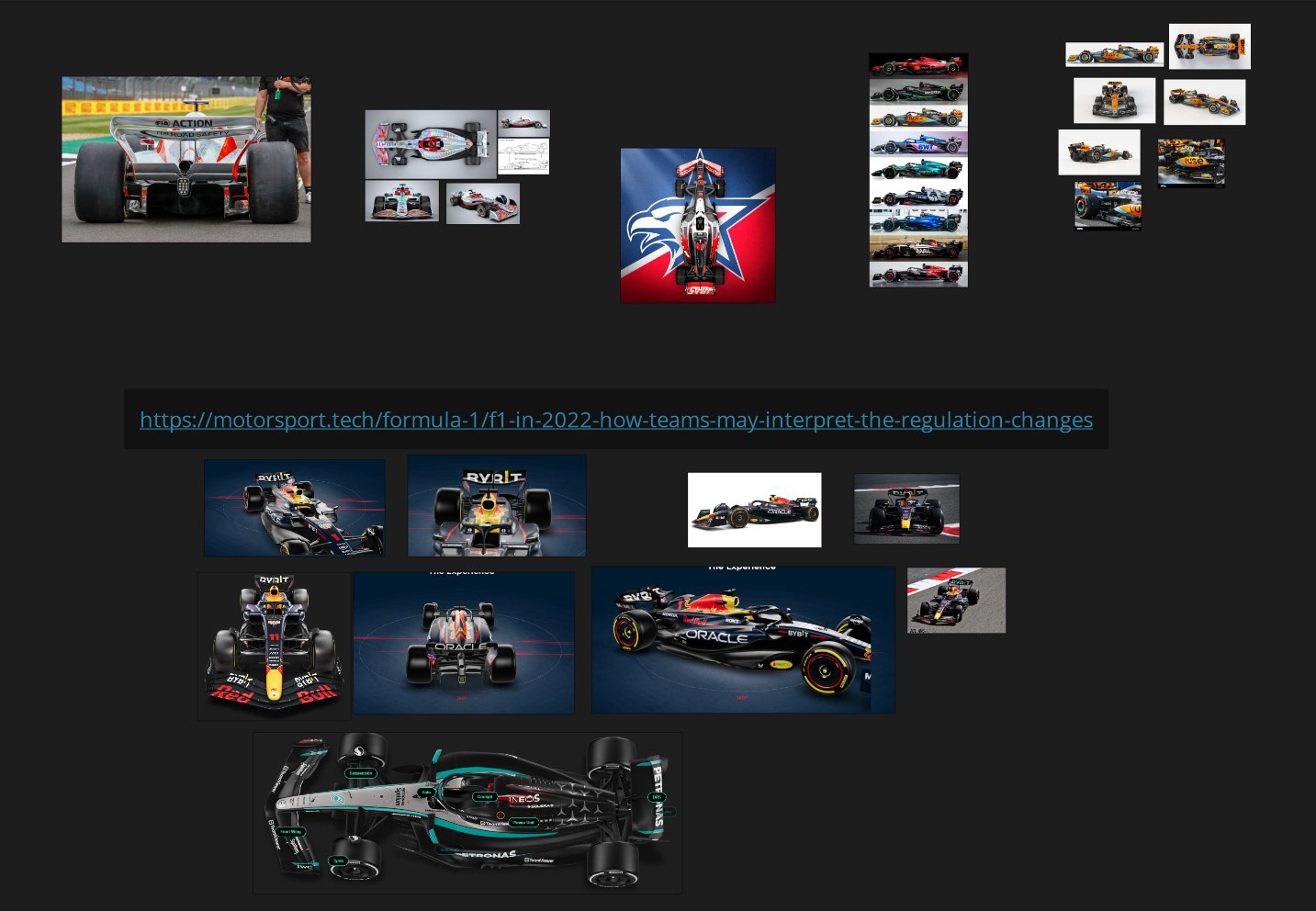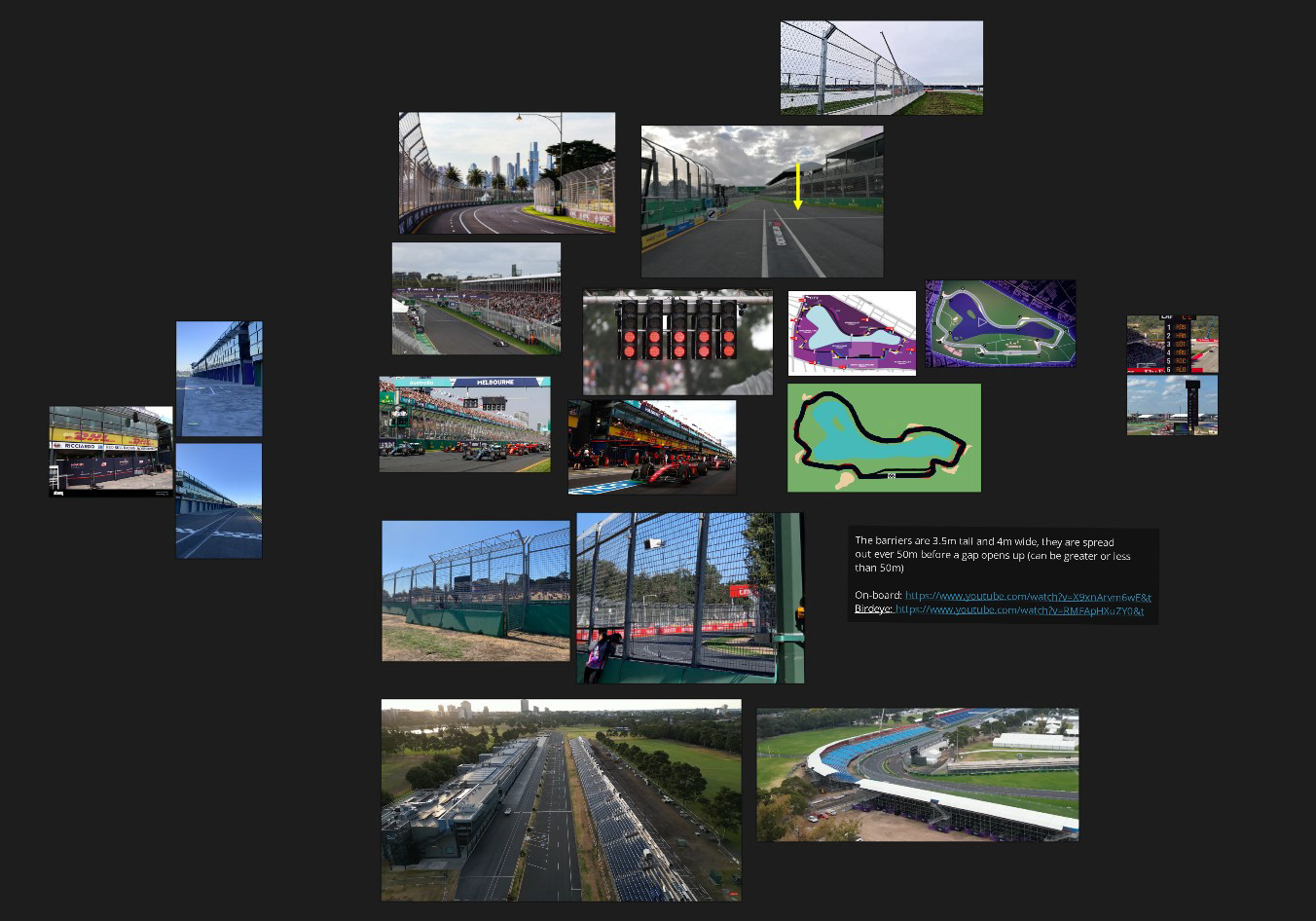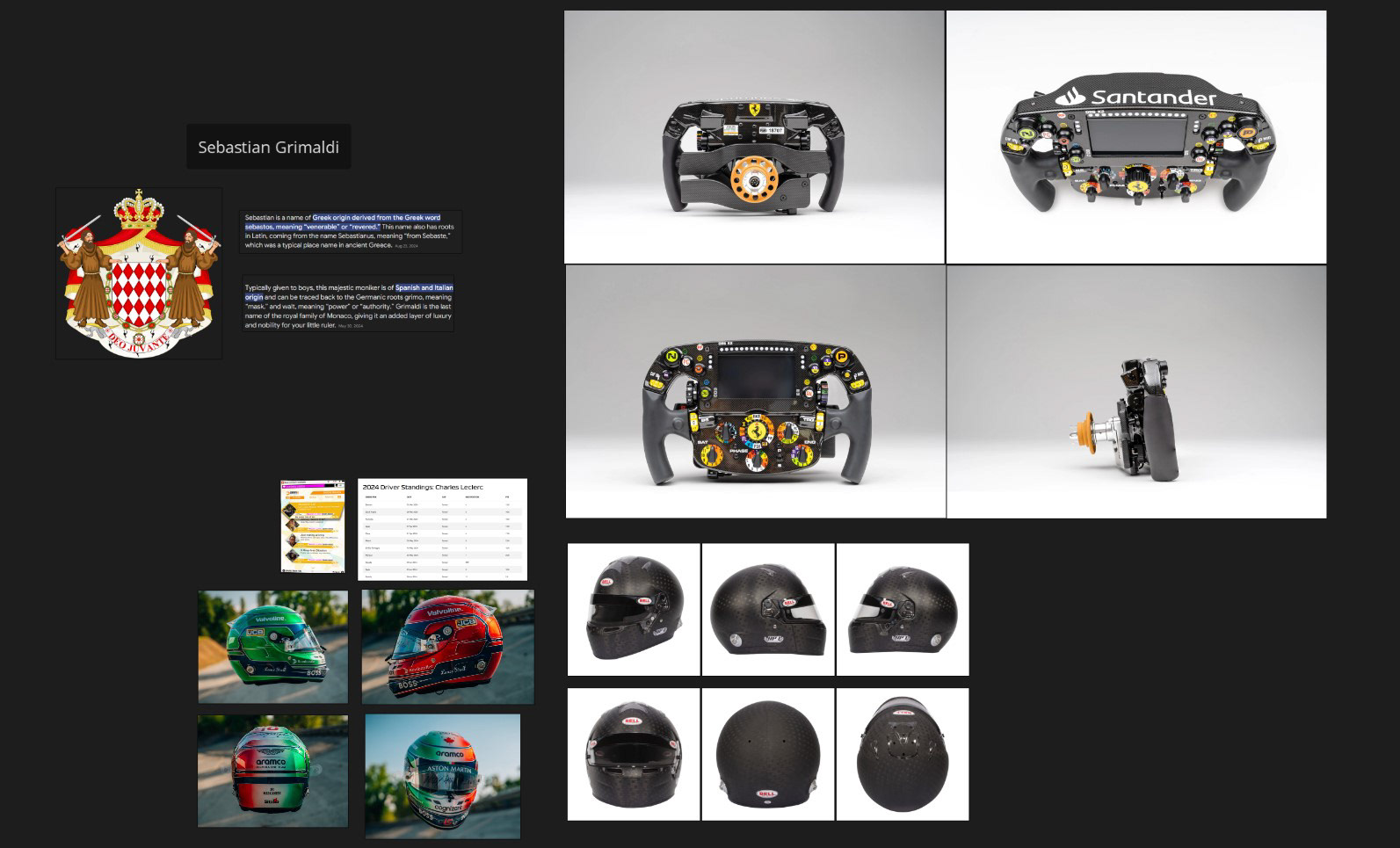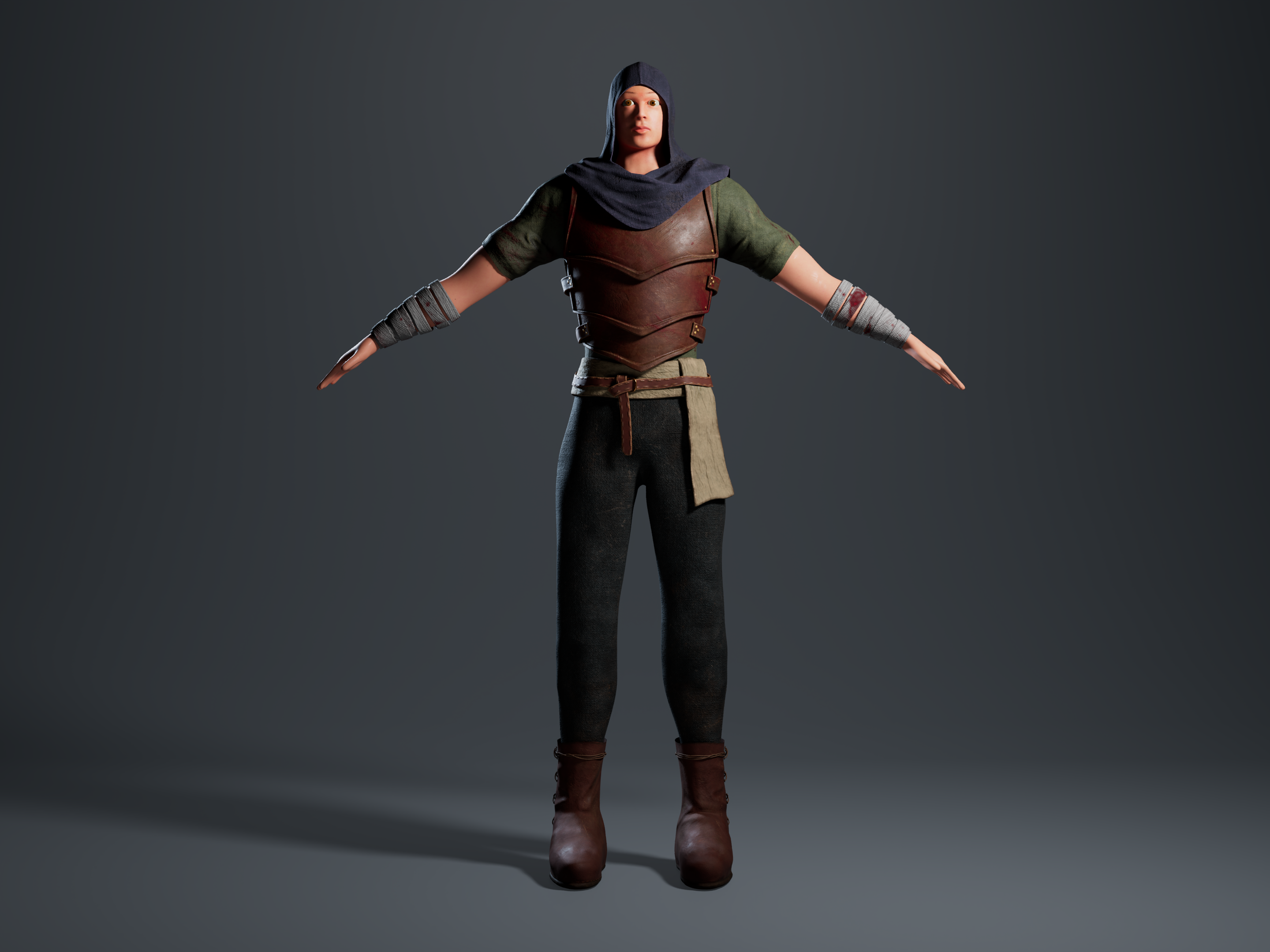A Racing Dream was my senior thesis project for the University of Central Florida and showcased at UCF Celebrates the Arts 2025 as a representative of SVAD’s Animation and Visualization track. It was an educational and insightful process bringing this project into fruition. Despite all the stress, I am extremely proud and satisfied of the final outcome. I’ve outlined some key parts of the work done below in this post!
Software: Autodesk Maya, Substance Painter, Adobe Photoshop, Blender, After Effects,
Davinci Resolve, Pure Ref
Davinci Resolve, Pure Ref
Renderer: RenderMan, Cycles
Time Spent: 16 weeks
Project brief and goals
The goals for the thesis was to create a narrative or non-narrative time-based work for exhibition in the BFA Spring Capstone Thesis UCF Art Gallery Showcase. We had a timeline of 16 weeks to complete this project and was given complete freedom on subject, theme, and tone of the film, as long as it was 100% originally conceived and produced during the course.
One of the my personal goals I set for the project was to have the story easily understandable by those unfamiliar with the sport of Formula 1, while still maintaining the adrenaline and excitement as a fan.
The story starts after a dreadful rookie season, a young racer must overcome his past and capitalize on his first chance to win a formula 1 race.
Pre-Production
Due to my lacking ability to draw, the pre-production stage served as a general reminder of the planned shots and sequences. Given the short time frame to produce the film, each shot was carefully framed to minimize the amount of background props needed to be modeled and textured.
Fun Fact! After midnight coming home from work and scrolling through social media about Formula 1, an idea suddenly came to me as I at the cusp of falling asleep. A flurry of various camera shots and environments came filled my imagination as I quickly jotted down the ideas before passing out. This idea became my short film A Racing Dream, which remained mostly unchanged from its original conception. As such, my thesis title is actually a double entendre, referring to the origins of its conception!



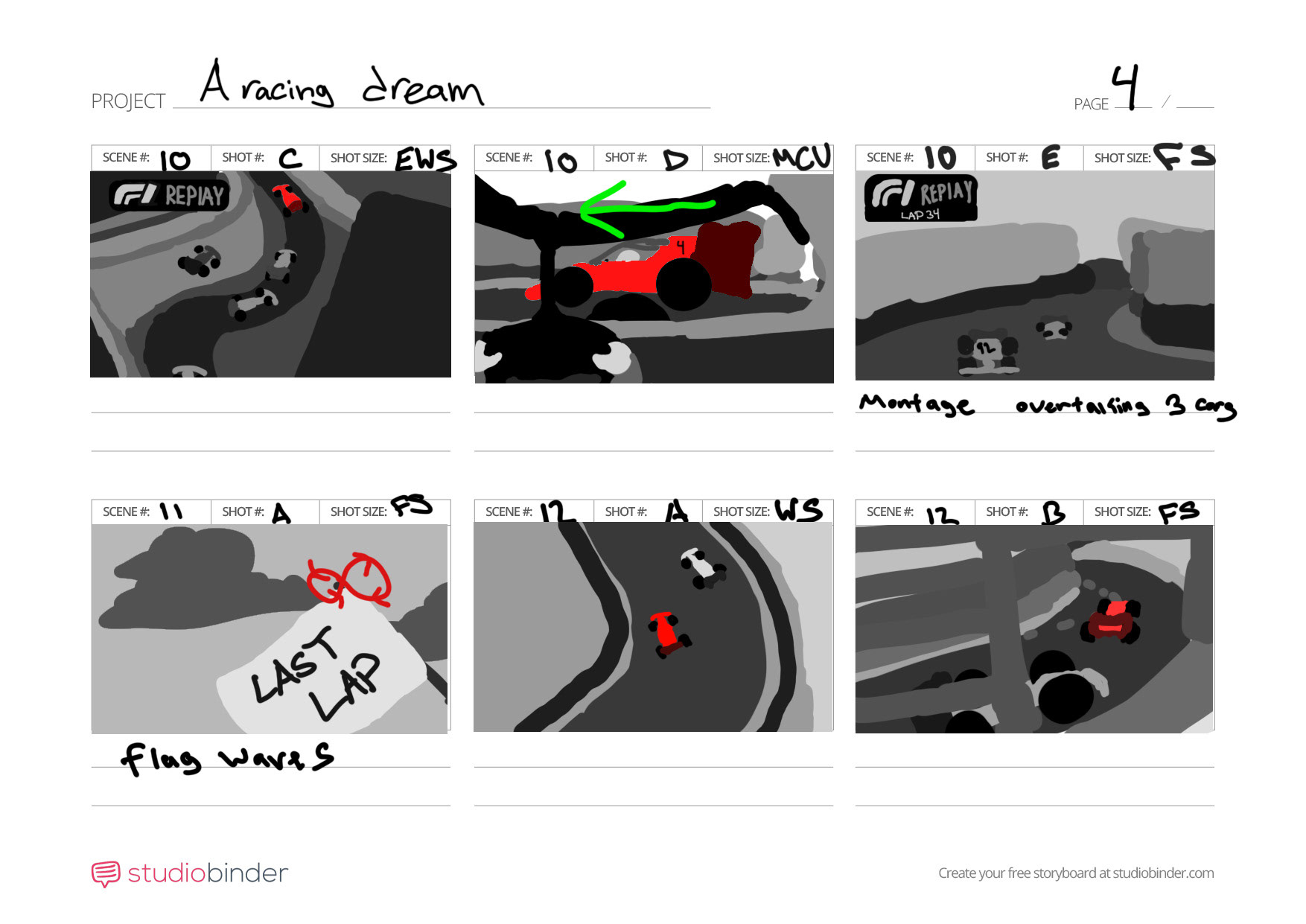

RenderMan
RenderMan is a very versatile and powerful render engine developed by Pixar Animation Studios. However despite it's extensive feature tool set, it wasn't without it's troubles during the production stage. The biggest issue, discovered with only 4 weeks left before the deadline, was a color space transformation issue.
To make a long story short, the solution was to set Substance Painter's OpenColorIO configuration from ACES 1.2 to Substance. The issue was that RenderMan's native texture manager was incorrectly converting the images into the ACEScg color space for a second time. This caused the renders to come out flat looking. This was especially apparent in the roughness maps, making everything look extra shiny and glossy. Only after sifting through the RenderMan documentation is when I discovered a warning with their Texture Manager not knowing what color spaces images are without including it in the filename. However when I added the recommended '_acescg' into the filename, the issue still persisted.
This made me look for an alternative solutions in hopes to improve the quality. That's when I realized that rather than texturing the objects in the ACES color space. Instead I can texture in a linear color space like Substance, and have RenderMan convert the images into ACES as intended. Thus began the short process of saving each substance file as a smart material and reapplying it to the same model with the new color space. Viola! The images came out similar to Substance Painter when rendered with RenderMan
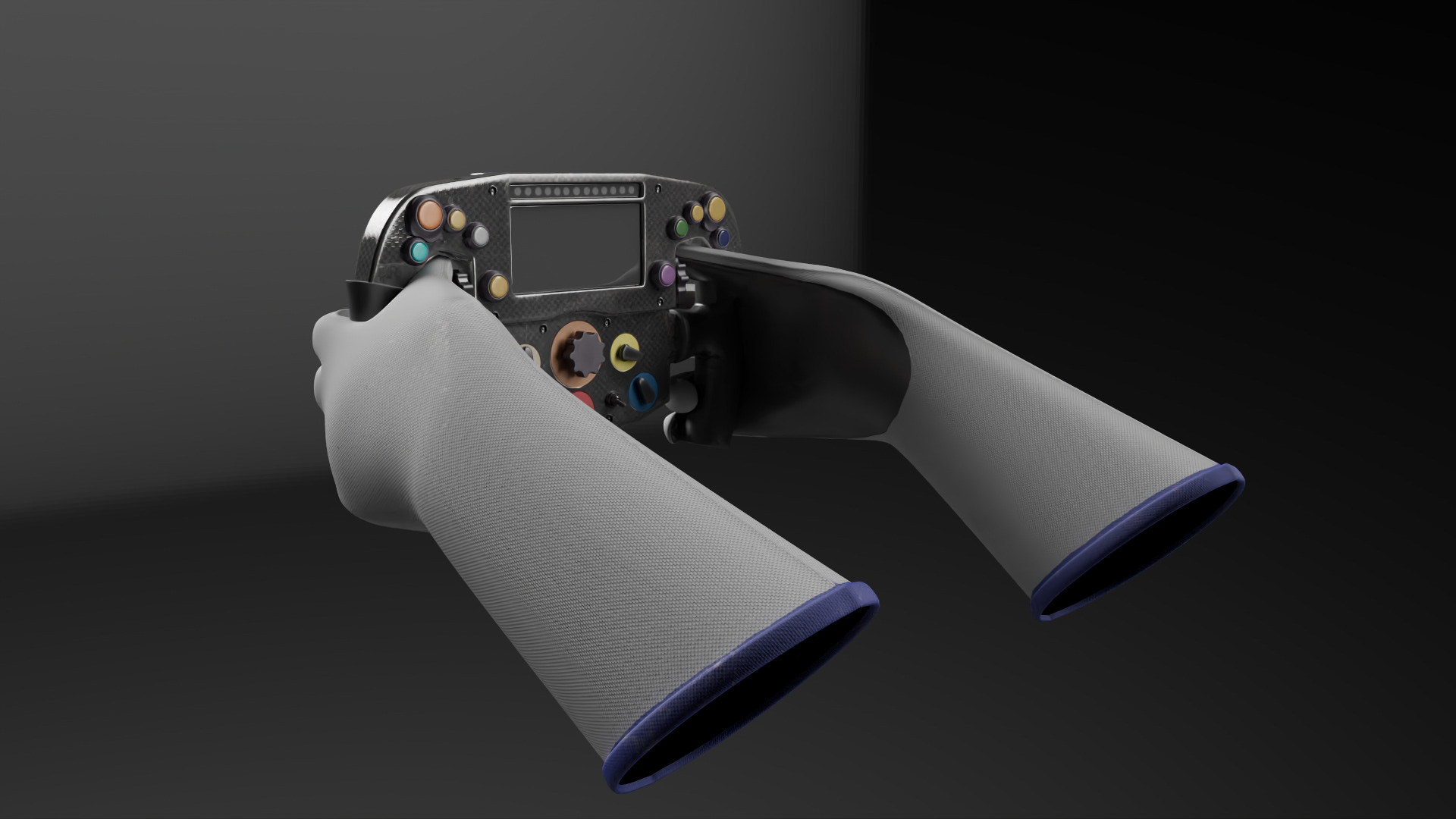
RenderMan - Wrong .TEX coversion
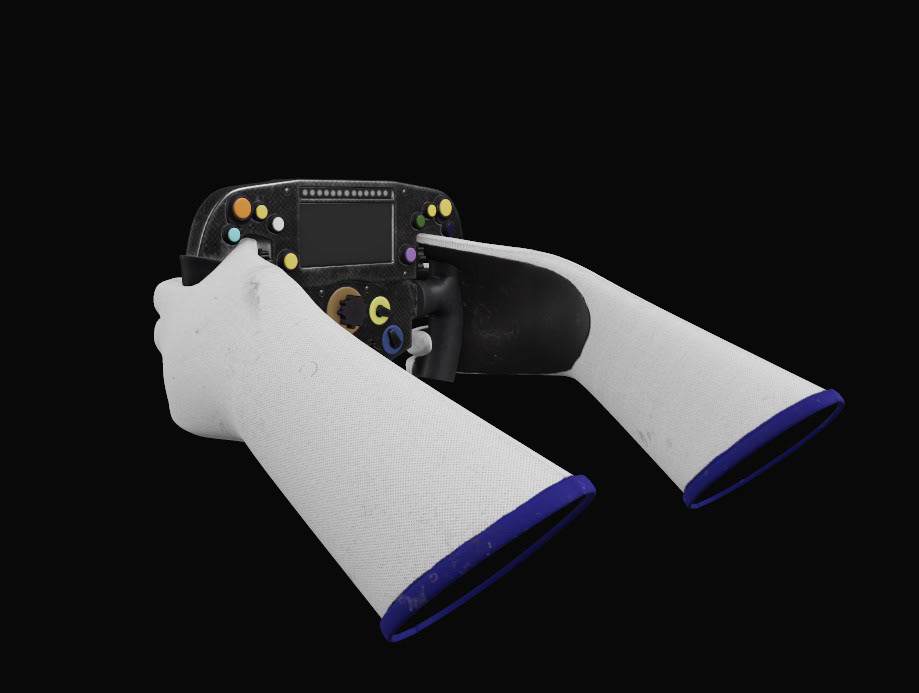
SubstancePainter
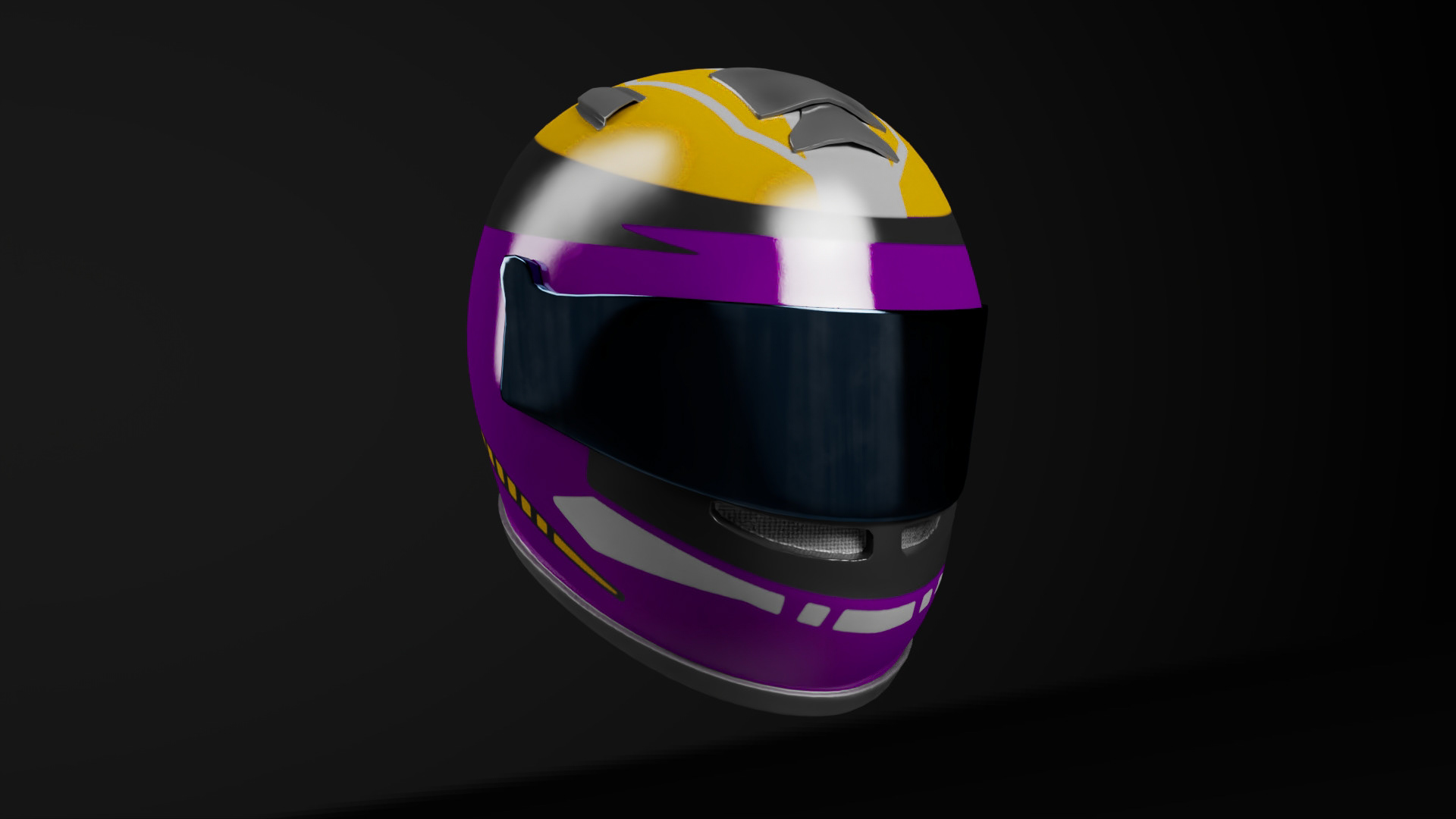
RenderMan - Wrong .TEX conversion
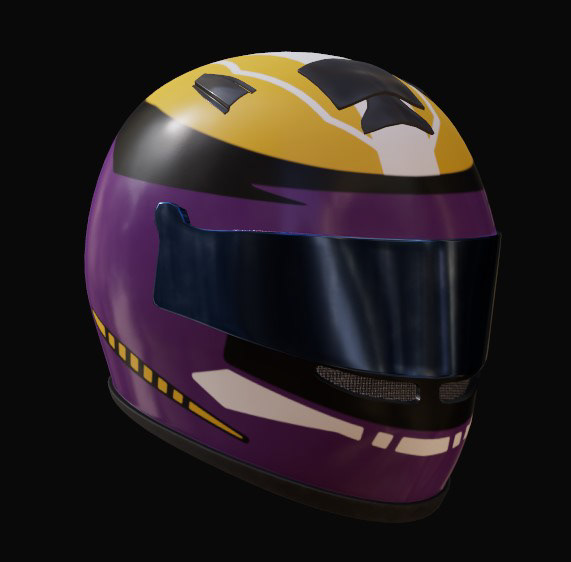
Substance Painter
The most appealing feature of the RenderMan's renderer is it's state-of-the-art Denoiser from Disney Research which uses machine learning to clean up and remove the noisy images from low-sample renders. However the biggest issue was render time. With maximum CPU, Ram, and GPU usage, the render time for the first shot took a whopping 6 hours and 8 minutes for 210 frames!
One solution I found to lower this render time is to break the denoising process into small chunks, roughly 50-75 frames per chunk. With almost every render, the time was usually a 3:7 split between renders with AOVs and the denoising process. The process of denoising the image seemed to exponentially increase every 25 frames past 100 frames total. Although by the time I discovered this time saving method, I had already completed rendering my shots greater than 200 frames. Although strange, this indeed makes sense as the denoiser must individually analyze over 6 AOVs need for this process. Scaling that up past 100 frame... it only makes sense that the times would increase drastically.
For example, with 25 frames the entire rendering and denoising process takes roughly an hour to complete. However when we go up to 240 frames, when rendering the slow motion sequence, the render time multiplied by 12 jumping to over half a day to complete.
Experimenting with rendering early on proved to be very helpful in hindsight. Without testing out this process, it would not have led to me discovering the color space issues and many other minor technical issues with IT viewer and file referencing. If I had stuck to the original timeline, leaving this step for the final few weeks before the deadline. There would have been a extremely good chance I would have missed said deadline.
Formula 1 Car
The main asset for this project was the Formula 1 car model, for both Archer Tran and Sebastian Grimmaldi. From start to finished it was modeled, UV'd and Textured in 4.5 weeks!
Knowing this process would take long, I ensured I allocated plenty of time to get the model done. Before beginning the car, I completed a majority, if not all, of the assets for the bedroom, motor home, and Albert Park Formula 1 Track environments. This was due to being unsure if I would be able to model the car in time, as it was my first time doing hard surface modeling. Furthermore something as complicated as a vehicle made me extra cautious about meeting the deadline. That way if I was unable to produce a high quality F1 Car asset, I would be able to change the short film into an environmental fly through rather than a narrative.
The hardest part about modeling this F1 car was finding a good place to begin. After many iterations of blocking out the shape of the car, I was constantly overwhelmed by the complexity. This process taught me the important lesson of having the confidence and perseverance to trust in the process. Essentially moving forward without worrying about the quality or topology. Slowly but surely, the F1 car began to take shape as my confidence in hard surface modeling grew. After being satisfied with the rough shape of the vehicle, I restarted modeling the vehicle, using the blocking as a template. From there I was able to focus on topology and minor details of the vehicle, without having to focus on the shape and form being asymmetrical or oddly shapped
The final model when smoothed using OpenSubdiv Catmull-Clark had 921,152 Tris and 20 UDIMS.

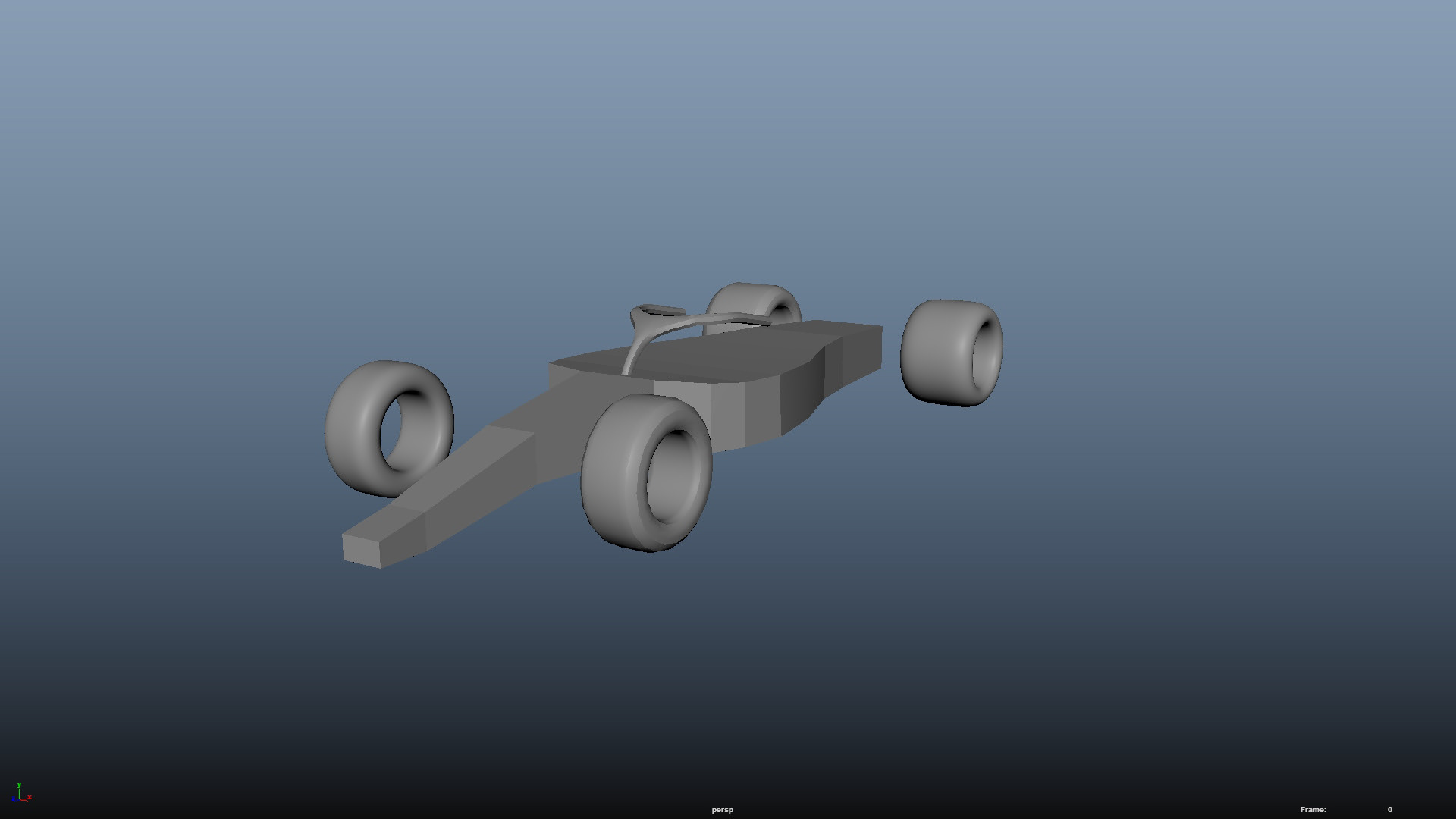
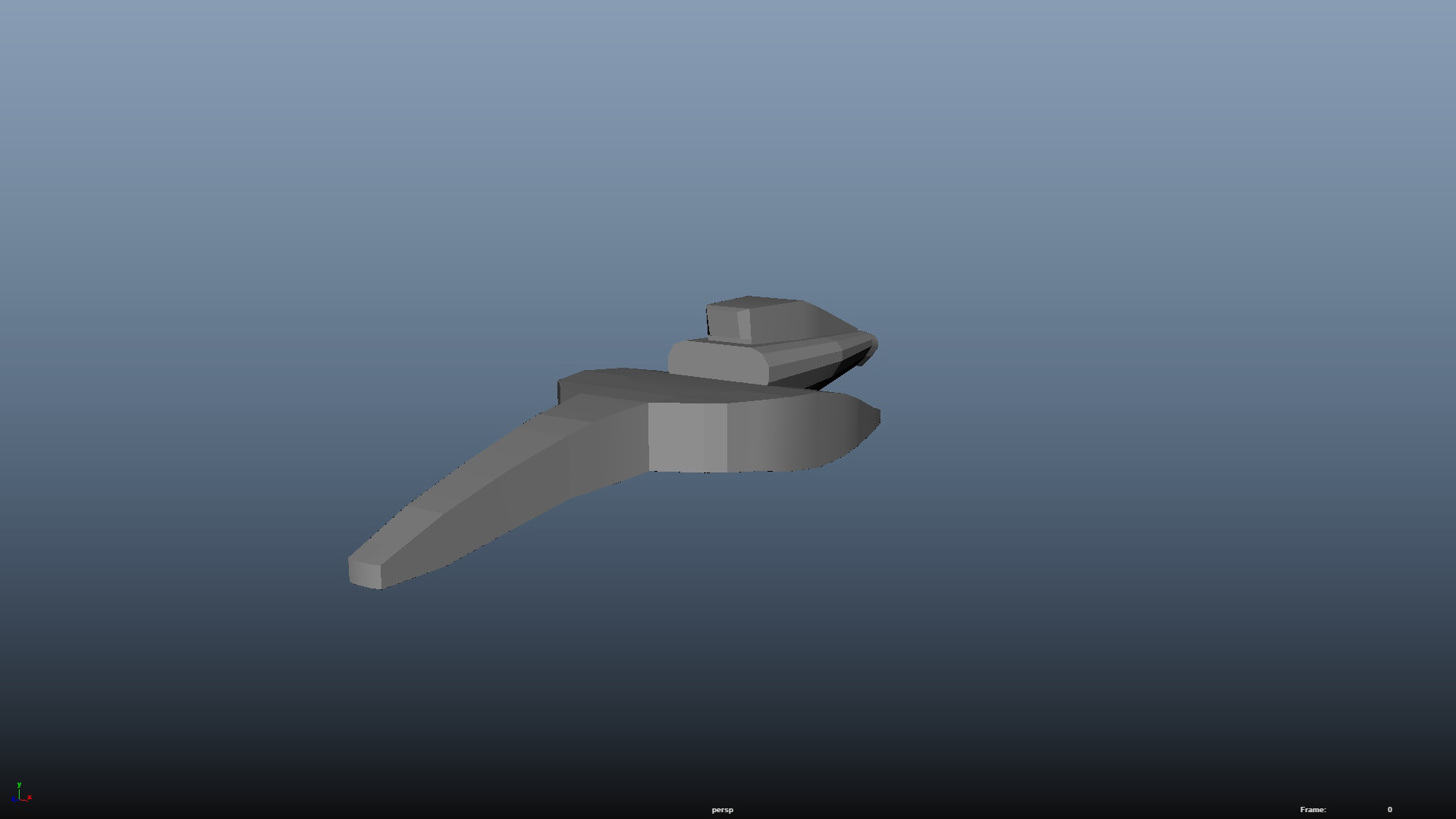

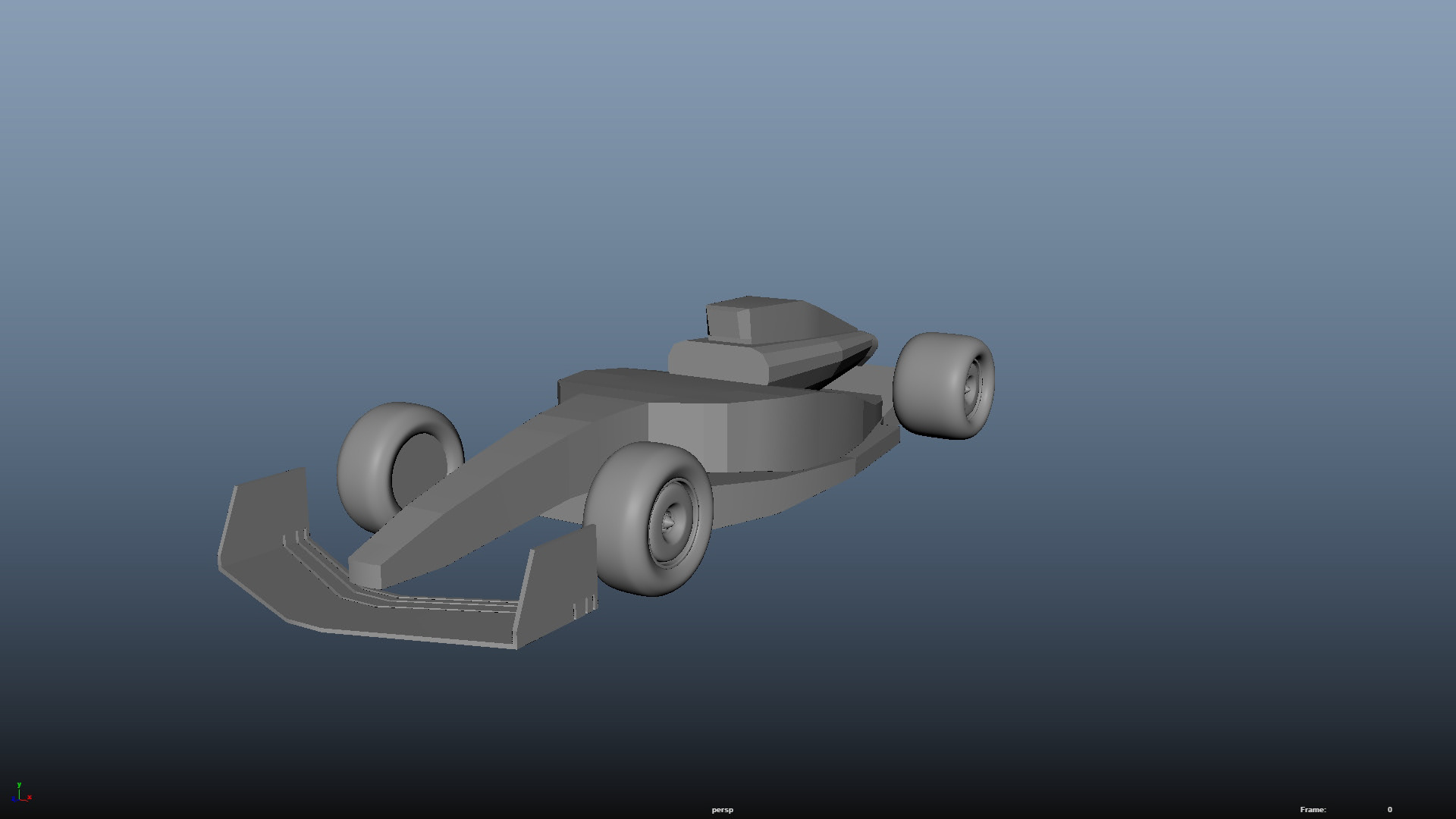

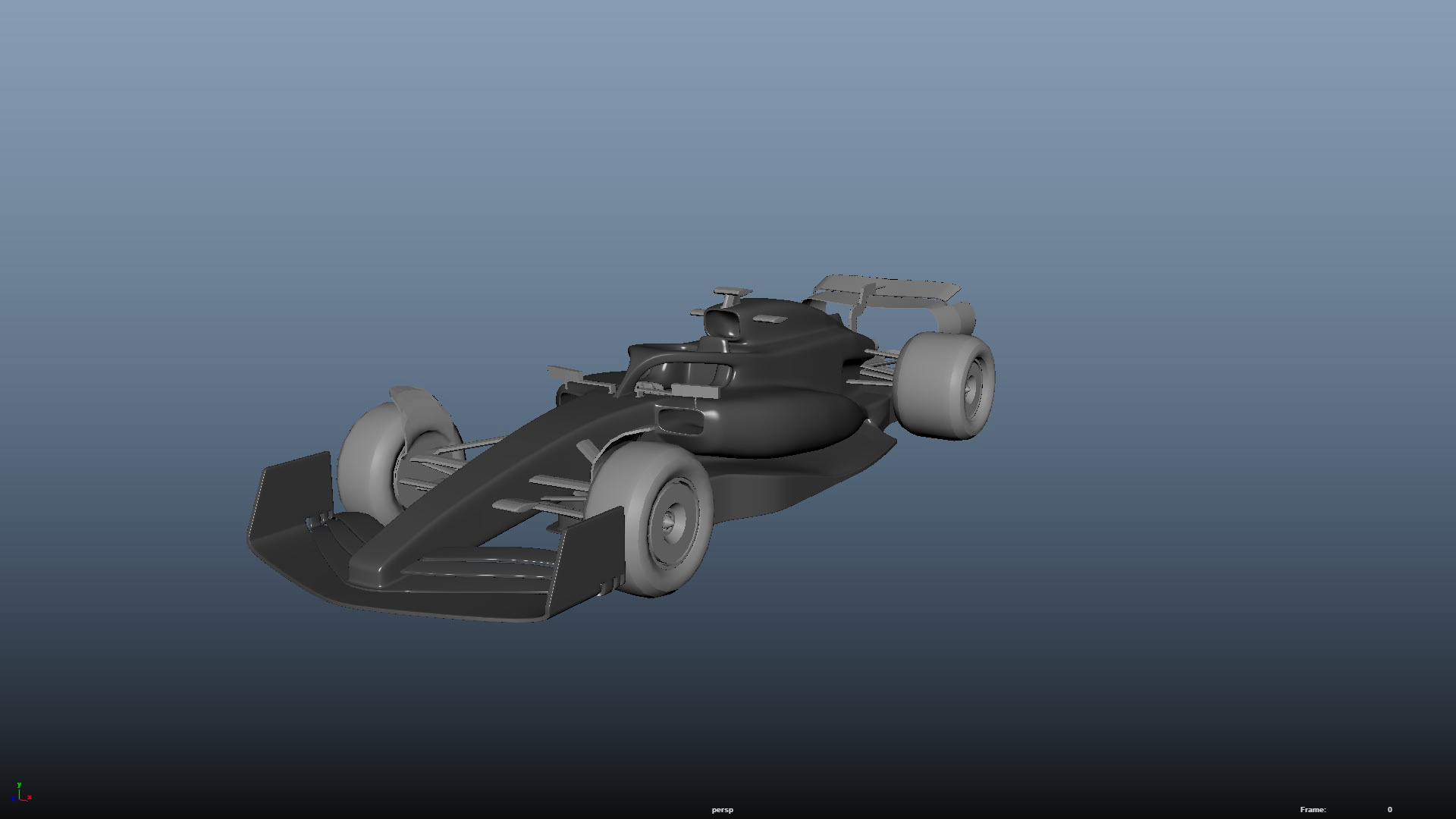
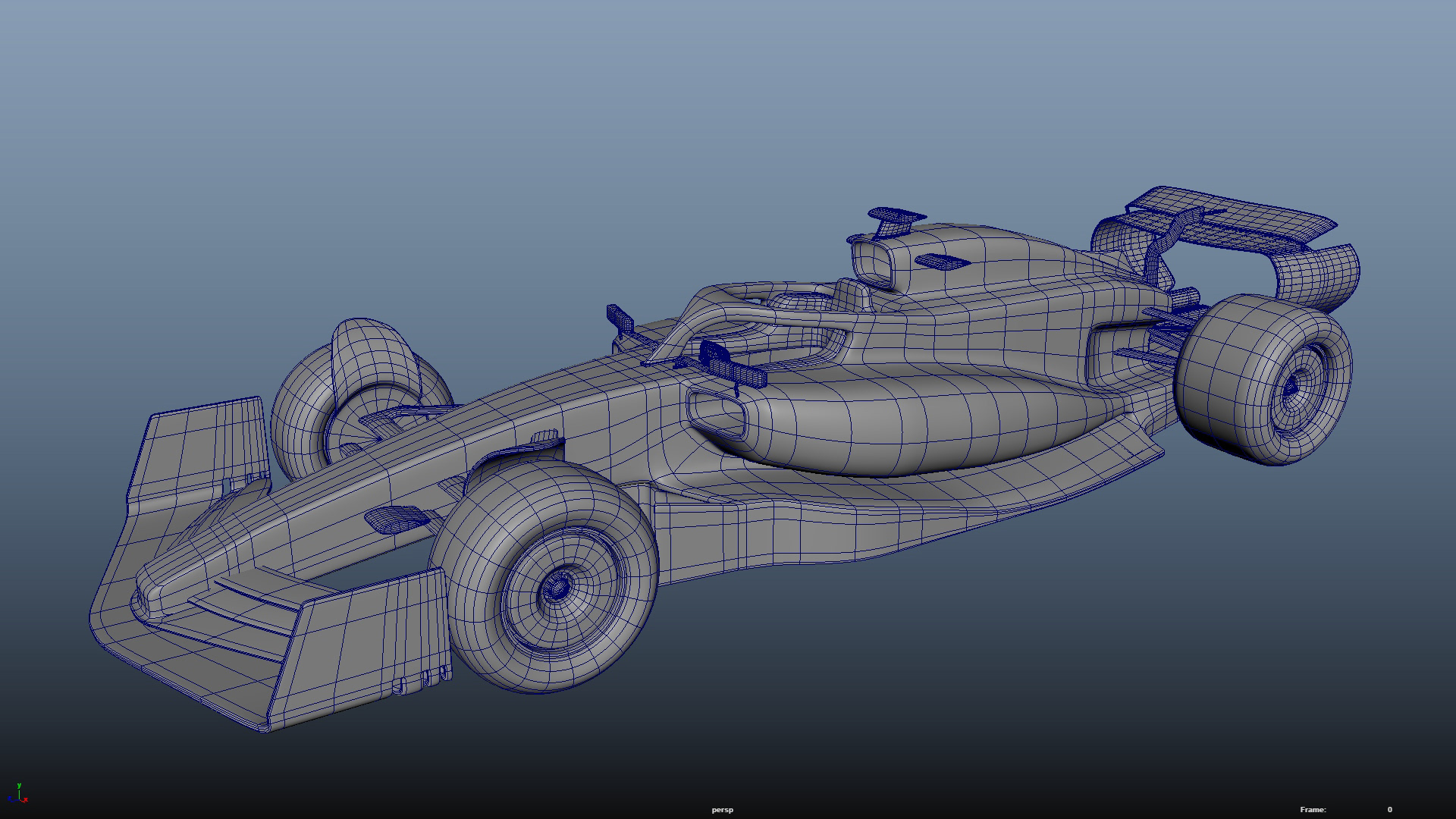
Miscellaneous
As with many projects, either due to time limitations or lack of proficiency, content must be cut down to meet the deadline. Here is some of the things that had to be cut!
Due to time limitations, unfortunately the design of the vehicle had to be reduced to basic solid colors to represent the two drivers.
The entire second half act 2 had to be cut due to time limitations as well. The first sequence of the second half of act 2 helped build into the final 'battle' between Tran and Grimmaldi. In the climax of act 2, Tran would be seen losing his lead due to a mistake causing him to drive through a gravel pit. This would lead directly into the next sequence where he speeds through the grid in hopes to get his first place back! After getting back up to 2nd, Tran would struggle overtaking Grimmaldi leading directly into the final lap replay where the two are neck and neck up to the finish line.
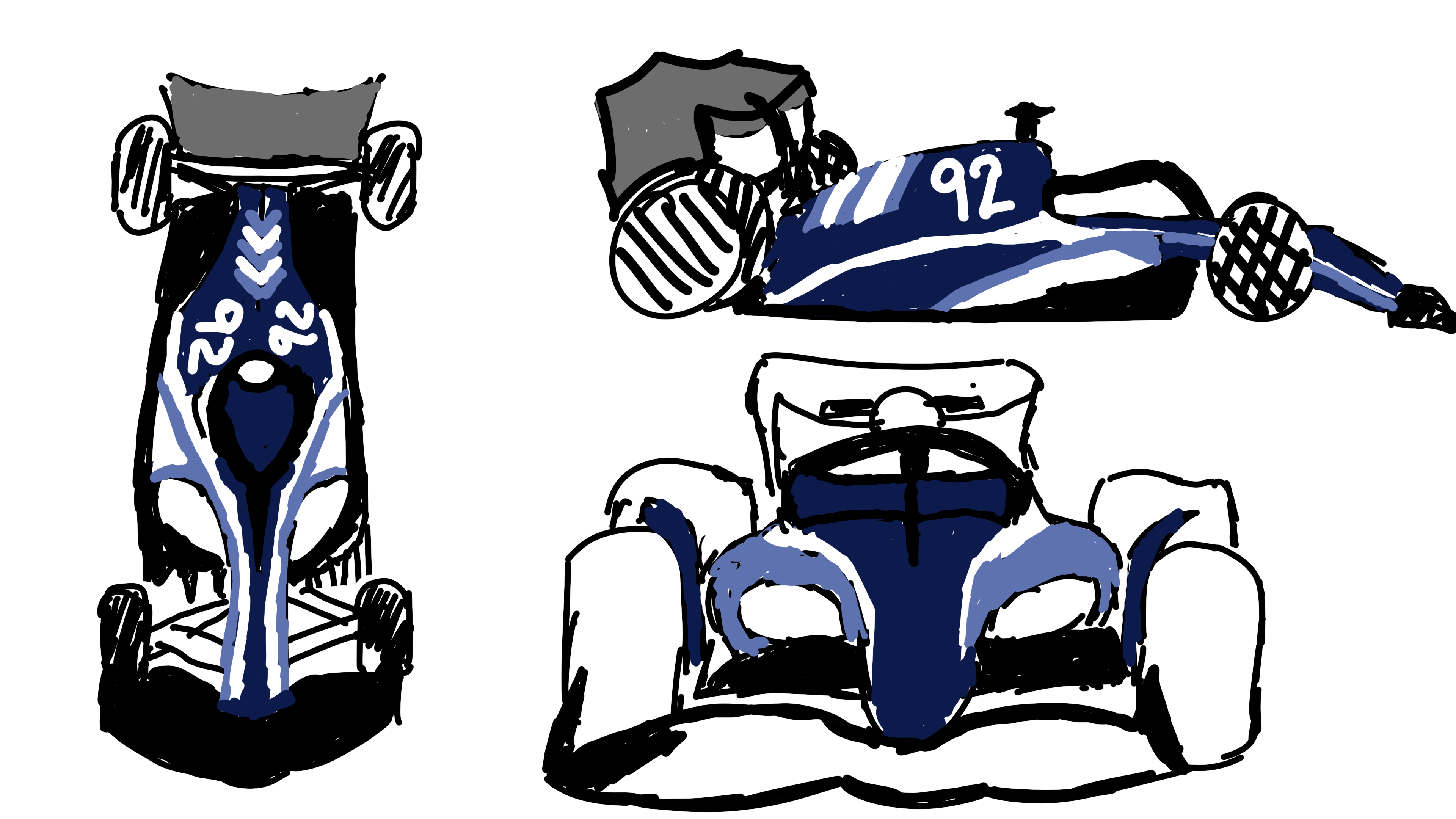
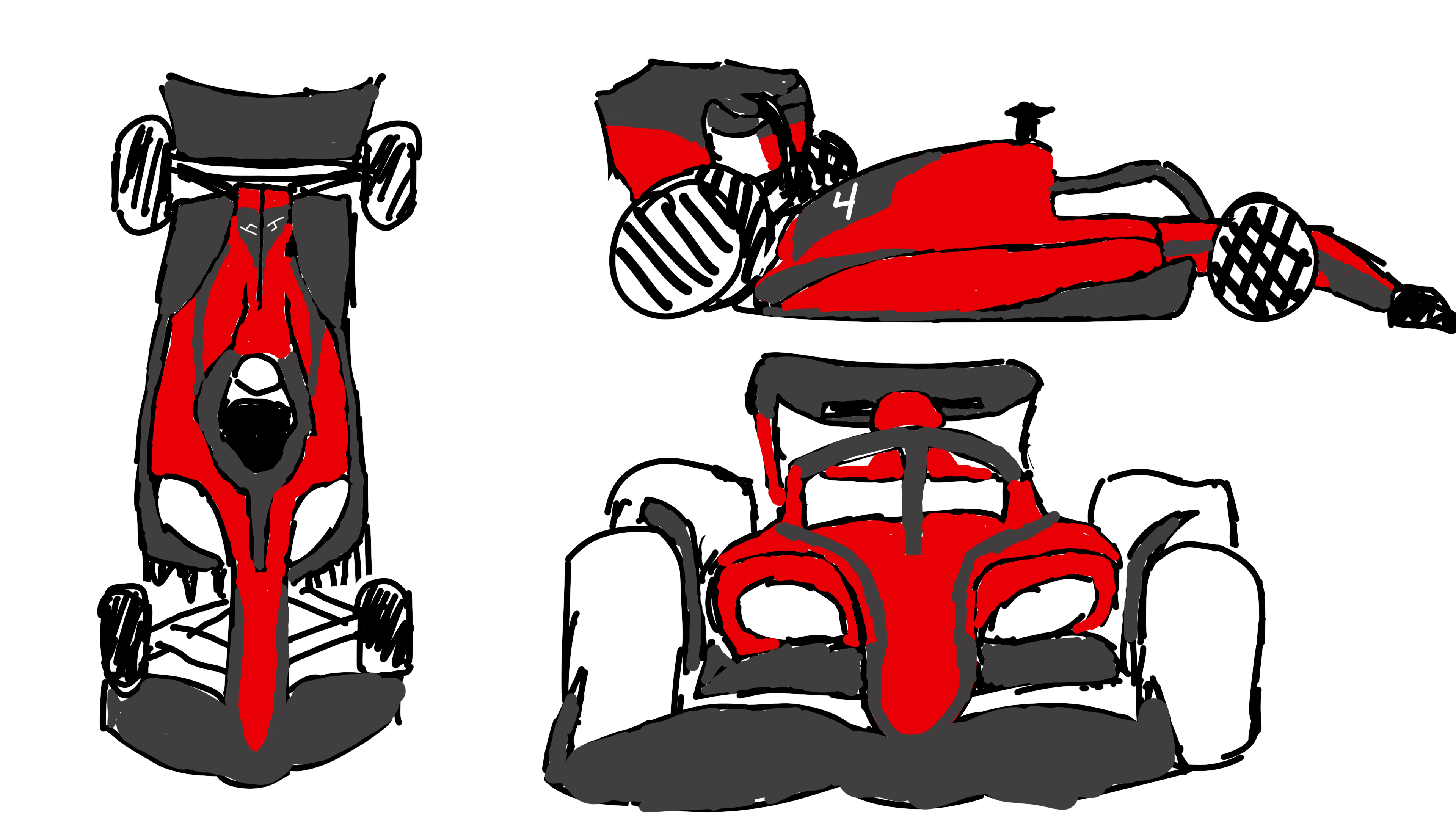
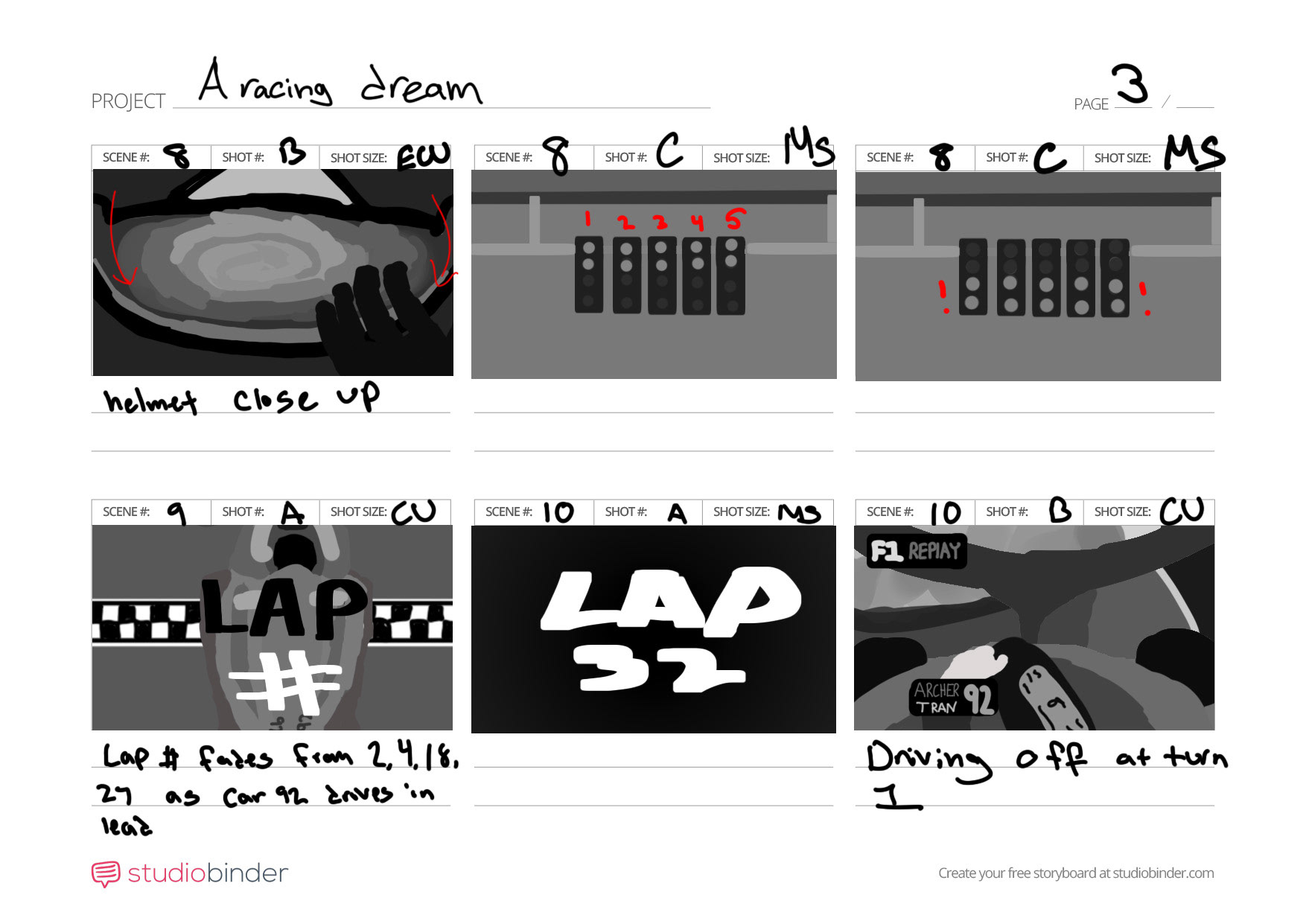

If your curious about what the original story would have been with the Act 2. Here is the per-visualization of the storyboard, completed during the Spring 2024
References
